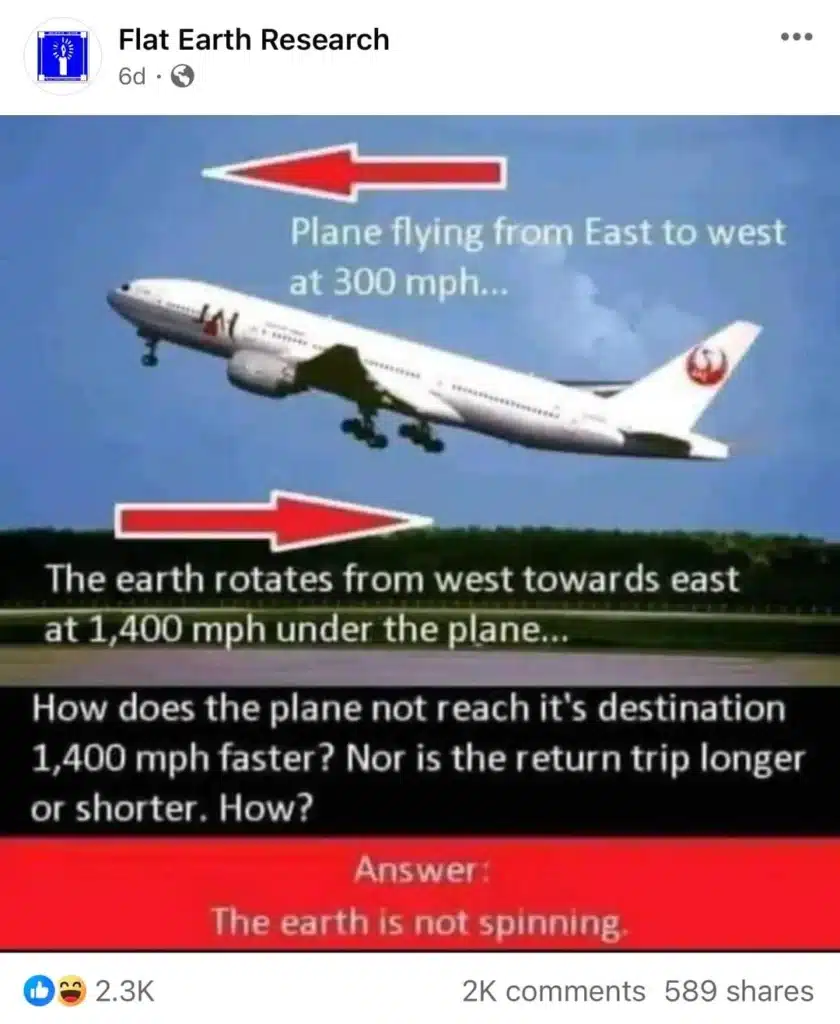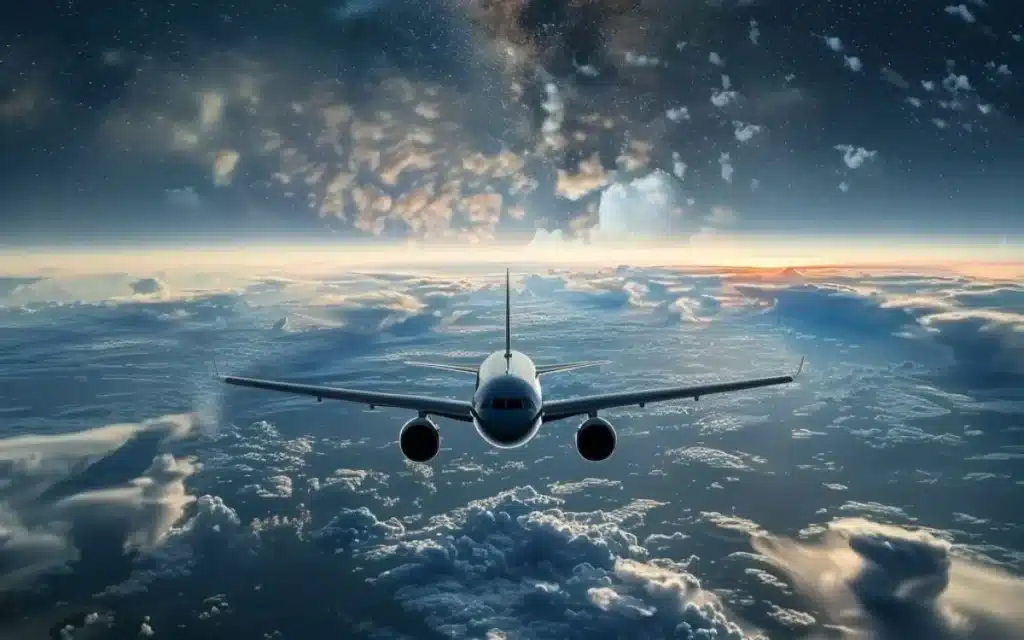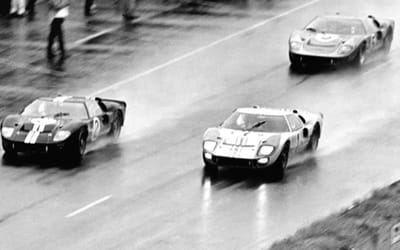People left perplexed at why flying against the Earth’s rotation doesn’t speed up flights
- People are confused about flight times
- Specifically why flying against the Earth’s rotation doesn’t speed up flights
- But it turns out the physics behind it explains the strange phenomenon
Published on May 09, 2024 at 7:22 PM (UTC+4)
by Amelia Jean Hershman-Jones
Last updated on May 14, 2024 at 5:23 PM (UTC+4)
Edited by
Tom Wood
People are confused as to why flying against the rotation of the Earth doesn’t actually speed up flights.
Admittedly the question was posted in a group that denies that the Earth is spinning at all.
But, while their theory seems to make sense, not surprisingly it seems they’re making a lot of incorrect assumptions about physics.
READ MORE! Life aboard Concorde: Experiences of passengers and crew
Posted to Flat Earth Research, it read: “Plane flying from east to west at 300 mph… The Earth rotates from west towards east at 1,400 mph under the plane… How does the plane not reach its destination 1,400 mph faster? Nor is the return trip longer or shorter. How? Answer: The Earth is not spinning.”
Spoiler alert – that is incorrect.
The correct answer lies in the airplane retaining the rotational velocity of the Earth due to inertia.
Inertia is the tendency for objects in motion to remain in motion in a straight line and at the same velocity – that’s unless another force acts upon them.

Let’s break that down: at the equator, the Earth spins at about 1,669 km/h (1,037 mph).
However, if you were to jump for joy at a luxury resort in the Maldives, for example, you land back on the ground in the same place.
Not, as this theory assumes, 1.39 kilometers (0.86 miles) to the west of your happy place.
This is because both you and the Earth are moving at the same velocity.
In the same way, airplanes, don’t start at zero ground speed.

Rather, they carry the Earth’s rotational speed eastwards.
In their question, airplanes are stationary in the sky as the ground turns at 1,670 kilometers per hour (1,037 miles per hour) beneath them.
That’s 27.83 kilometers per minute (17.29 miles per minute) or 0.46 kilometers per second (0.29 miles per second).
One thing that will speed up flights is actually going faster – like hitting supersonic speeds.
The atmosphere also moves in sync with the Earth, dragged along by frictional forces – instead of there being constant high winds from the west at speeds matching Earth’s rotation.
Airplanes do not fly through a stationary atmosphere, they travel through an air mass that moves in tandem with Earth.

Jet streams also play a crucial role.
These high-altitude air currents flowing (mostly) west to east, do have the ability to ramp up the speed of planes flying in the same direction – like this commercial plane that accidentally flew faster than the speed of sound earlier this year.
Influenced indirectly by Earth’s rotation through the generation of these wind patterns, this renders flights from west to east faster (for the most part) due to helpful tailwinds.
In summary – while a plane can’t take off and simply wait for the Earth to move below it, the rotation of Earth does indirectly affect flight times through wind speed and whether it’s traveling with or against you.
And seeing as you’ll need entertaining for however long your flight takes, here’s an insight into the technology behind Emirates’ in-flight entertainment system.
The most exclusive premium first-class cabin is also said to make time ‘fly’.
Some of the images used in this article were generated with AI.
DISCOVER SBX CARS: The global premium car auction platform powered by Supercar Blondie

All Supercar Blondie contributors undergo editorial review and fact-checking to ensure accuracy and authority in automotive journalism. After gaining her BA Hons in French and English at the University of Nottingham, Amelia embarked on a vocational diploma from the National Council for the Training of Journalists (NCTJ). This led to numerous opportunities, from interning at Vogue to being on the small team that launched Women’s Health magazine in the UK, which was named the PPA Consumer magazine of the year for three years running. As Health, Beauty and Fitness editor, Amelia personally received a Johnson & Johnson Award and was shortlisted for both PPA and BSME titles. Since then, Amelia has created content for numerous titles and brands, including the Telegraph, 111 Skin, Waitrose, Red magazine, Stylist, and Elle, as well as being Head of Content at Vitality and Editor in Chief at INLondon magazine. “My superpower is translating technical jargon about the mechanical workings of a supercar into a relatable story you’ll want to share with your friends after you’ve read it.” After joining the SB Media family as a senior journalist in September of 2023, Amelia’s role has evolved to see her heading up the SEO output of the editorial team. From researching the most ‘Google-able’ key terms to producing evergreen content - it’s been a time of hard work, growth, and success for the editorial team and the Supercar Blondie website. “I like to think of myself as a ‘method journalist’. In other words: I live and breathe whatever I am writing about. When writing about fitness, I trained as a personal trainer, and as a beauty editor, I completed an ‘expert’ in scent diploma with the Fragrance Foundation. “During my tenure at Supercar Blondie, however, I did something I never thought possible: I passed my driving test at the age of 36. One day I’d love to train as a mechanic to better understand what happens under the hood, too. “My sweet spot is providing readers with a ‘takeaway’ (read: something new they didn’t know before) after reading every one of my stories. While I don’t claim to be an expert in the automotive world, I know the experts and bodies in the field to rely on to provide our readers with an informative and thought-provoking story every time they visit the site.”




